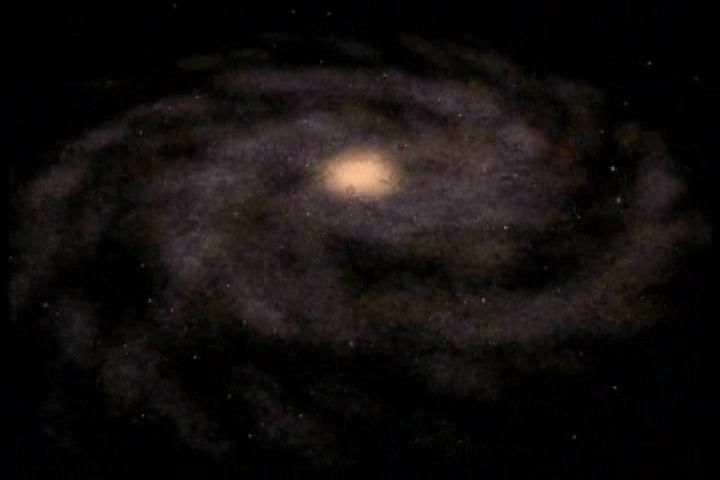Rebel Stars Cross Paths with Sun

Newly discovered galactic highways cut across the Milky Way at odd angles, bringing stars through the neighborhood of our solar system.
The roads of rebels could be part of a galaxy-wide system of divergent stellar byways, researchers say.
The Sun and most other stars in our Milky Way orbit the galactic center on fairly routine, circular paths. So astronomers were surprised to find in a new survey that about 20 percent of the stars within 1,000 light-years of the Sun are moving on a bunch of offbeat trajectories.
The Sun is at "a crossroads of many streams," according to a research team that examined data on more than 100,000 stars gathered by the European Space Agency's Hipparcos satellite. The routes are mostly headed toward or away from the galactic center, like spokes on a wheel. Stars on each of the courses vary significantly in age and composition, suggesting they had different origins and haven't always been on their present paths.
"They resemble casual travel companions more than family members," said Benoit Famaey, Universite Libre de Bruxelles, Belgium.
So what caused all the commotion?
Density waves
Breaking space news, the latest updates on rocket launches, skywatching events and more!
Famaey's team believes the stars have been gravitationally stirred by the spiral arms of the Milky Way. Each arm is packed with more stars and gas than the areas between the arms. These density waves, as astronomers call them, compress gas and force star formation. They can also deflect the motion of stars.
"If these stars are kicked by a spiral arm, they can be displaced thousands of light-years away from their birthplace," Famaey said.
While the setup might sound chaotic, there is little if any additional threat to our solar system. In principle, the newly realized star paths mean the chance of a collision or other interaction with the Sun is greater than was previously known, said Alain Jorissen, also of Universite Libre.
"But in practice," Jorissen told SPACE.com, "average distances between stars are so large anyway that the chance of a close encounter remains quite small."
Eventually, most of the rebels will be straightened out. Over time, the disruptive effect of a spiral arm will vanish as a star moves away from the arm and the galaxy's collective gravity takes over.
"It is likely that the star will then find itself on a more conventional orbit," Jorissen said.
The next close call
The closest stars currently known are a trio that make up the Alpha Centauri system, which is 4.36 light-years away. A light-year is the distance light travels in a year, about 6 trillion miles (10 trillion kilometers).
Meanwhile, our next known close encounter with another star will occur 1.4 million years from now.
A star named Gliese 710, found by Hipparcos and reported in 1999, will pass within 1 light-year of the Sun. That puts it some 70,000 times the distance from Earth to the Sun, on the very fringes of our solar system where icy objects are thought to roam in what's known as the Oort Cloud. Such stellar close calls in the past are thought to have rerouted comets from the Oort Cloud toward the inner solar system, where some hit Earth.
Gliese 710 "does not seem to belong to one of our streams," Jorissen said.
To turn the Hipparcos data into a 3-D view of the solar neighborhood, the researchers added observations on each star's movement collected by a Swiss telescope at the Observatoire de Haute-Provence in France. A movie depicting the streams is available here (may load slowly).
The results are detailed this month in the European journal Astronomy & Astrophysics.
- Spirals: Why Galaxies Look Like Hurricanes

Rob has been producing internet content since the mid-1990s. He was a writer, editor and Director of Site Operations at Space.com starting in 1999. He served as Managing Editor of LiveScience since its launch in 2004. He then oversaw news operations for the Space.com's then-parent company TechMediaNetwork's growing suite of technology, science and business news sites. Prior to joining the company, Rob was an editor at The Star-Ledger in New Jersey. He has a journalism degree from Humboldt State University in California, is an author and also writes for Medium.
